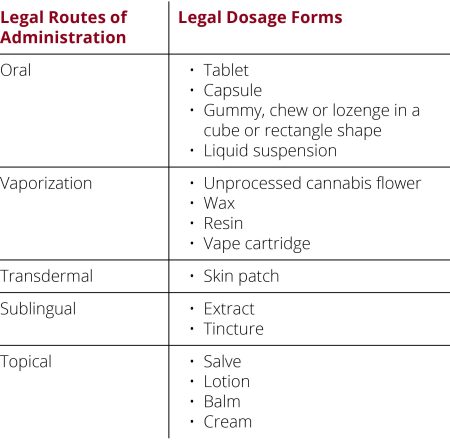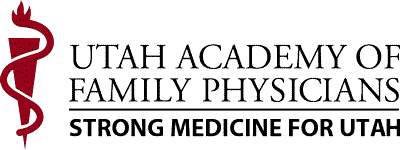Introduction
As the number of Utah medical cannabis patients has grown to over 72,000, medical providers are getting more questions about medical cannabis. More patients are learning about cannabis, thinking about using it as a treatment and keeping an eye on the possibility of federal changes in cannabis regulation. Although medical cannabis treatment is not for everyone, it’s essential that medical providers are prepared to answer questions and become familiar with options for recommending medical cannabis to patients.
The state of Utah provides two options for medical providers to recommend medical cannabis: the qualified medical provider (QMP) program or the limited medical provider (LMP) program.
Participating in the Qualified Medical Provider (QMP) Program
Medical providers who are Utah-licensed MDs, DOs, APRNs, PAs or DPMs with controlled substance licenses may register with the Utah Department of Health and Human Services (DHHS) as a QMP. To register, medical providers must complete the following three steps:
- Complete four hours of DHHS-approved continuing education.
- Apply online for a medical cannabis registration card and pay the application fee.
- Receive your medical cannabis QMP registration card once DHHS has reviewed your application and made sure that all requirements are met.
Once these steps are completed and the QMP has their QMP registration card, they can recommend medical cannabis to patients. Each QMP has a patient limit of 1.5% of the total number of registered medical cannabis patients. If a medical provider receives payment from a patient’s insurance plan for their services, then the patient whose insurance plan was billed does not count toward the provider’s patient limit. As of Oct. 1, 2023, the patient limit is 1,092 patients. This limit is updated quarterly by DHHS.
To provide a patient with a medical cannabis recommendation, the QMP must complete the following three steps:
- Attend an in-person appointment with the patient to discuss their medical condition and treatments they have already tried.
- Log into the medical cannabis Electronic Verification System (EVS) and complete the online medical cannabis recommendation form. The recommendation form will include the patient’s personal information, their qualifying condition and the length of time that the recommendation is valid. The QMP also has the option to provide dosing guidelines in the recommendation or to defer dosing guidelines to the medical cannabis pharmacist.
- Save and submit the recommendation. Once the recommendation is submitted, the patient can pay the DHHS-required fees, receive their medical cannabis card via email and purchase medical cannabis.
Additionally, QMPs can see patients who do not have a qualifying condition for medical cannabis use or who are younger than 21 years old. In these cases, they must submit a petition and the patient’s medical records to the Compassionate Use Board (CUB). If the CUB approves the petition, the patient can be issued a medical cannabis card and purchase medical cannabis. The CUB is comprised of seven qualified medical providers appointed by the DHHS Executive Director and confirmed by the Utah State Senate.
Participating in the Limited Medical Provider (LMP) Program
LMPs are often thought of as primary care providers who can recommend medical cannabis for up to 15 of their long-term patients. The LMP program can also be used for providers who are unable to meet the QMP continuing education and registration requirements. The LMP program promotes patient care and patient access to medical cannabis.
Medical providers who are Utah-licensed MDs, DOs, APRNs, PAs or DPMs with controlled substance licenses may participate in the LMP program. To participate, LMPs must complete the following three steps:
- Attend an in-person appointment with the patient to discuss their medical condition and treatments they have already tried. The patient must have a medical condition included on the list of qualifying conditions and be at least 21 years of age.
- Download and complete the Limited Medical Provider Recommendation for Medical Cannabis form, available through scanning the QR code. Required information includes the LMP’s DOPL licensure information, their current clinic or practice, the patient’s information and the medical cannabis recommendation.
https://medicalcannabis.utah.gov/wp-content/uploads/LMP-06122023.pdf
Send the completed form to a DHHS licensed medical cannabis pharmacy through an encrypted email, secure fax or by asking the patient to deliver the form directly.
Once these steps are complete, the LMP’s portion of the medical cannabis recommendation is done. After the patient starts their medical cannabis card application online, their chosen medical cannabis pharmacy will enter the completed “Limited Medical Provider Recommendation for Medical Cannabis form into the DHHS electronic verification system (EVS) software so DHHS can review and approve the application. After DHHS approves the application, the patient can pay their card registration fee, receive their medical cannabis card by email and purchase medical cannabis.
Sometimes, an LMP cannot meet a patient’s medical cannabis needs and should refer the patient to a QMP. Examples may include the following situations:
- A patient is younger than 21 years and requires a CUB petition.
- The patient doesn’t have a condition listed on the qualifying conditions list and requires a CUB petition.
- The LMP has already reached their limit of 15 active medical cannabis recommendations.
- The LMP’s employer will not allow the LMP to recommend medical cannabis to patients.
Qualifying Conditions for Medical Cannabis Use
The state of Utah uses a qualifying conditions list to determine if patients are eligible to receive a medical cannabis recommendation without petitioning the CUB. The following conditions are approved for medical cannabis use:
- Acute pain
- Autism
- Alzheimer’s disease
- Amyotrophic Lateral Sclerosis (ALS)
- Cancer
- Cachexia
- A condition resulting in the patient receiving hospice care
- Crohn’s disease or ulcerative colitis
- Epilepsy or debilitating seizures
- HIV or AIDS
- Multiple sclerosis (MS) or persistent muscle spasms
- Post-traumatic stress disorder (PTSD)
- Persistent pain
- Persistent nausea under certain conditions
- A rare condition or disease that affects less than 1 in 200,000 individuals in the U.S. and is not adequately managed by a non-opioid or physical intervention
- A terminal illness with less than six months to live
The DHHS Center for Medical Cannabis provides resources with evidence-based information and guidelines about using medical cannabis for each qualifying condition. Scan the QR code to access these available resources on the DHHS Center for Medical Cannabis website.
https://medicalcannabis.utah.gov/resources/cannabinoid-product-board/
Dosage Forms
Several medical cannabis dosage forms are legal in Utah. Providers can limit the dosage forms that patients can purchase in their recommendation. The following table shows the legal medical cannabis dosage forms and how they are administered.

Medical Cannabis Documentation in the Utah Controlled Substance Database (CSD)
The DHHS Center for Medical Cannabis is required to record all active medical cannabis cards in the Utah Controlled Substance Database (CSD). Any medical provider with access to the CSD can view this information. Use the following steps to review medical cannabis cards in the CSD:
- Search the CSD for a patient. In the patient search, you will see a list of patient warnings that link to additional information about the patient. A patient with a green cannabis leaf symbol in the patient warnings has an active medical cannabis record in the CSD.
- Click the green leaf icon to see the medical cannabis card search results.
- Open the search results to see additional details about the medical cannabis card and the recommending medical provider.
Resources on the DHHS Center for Medical Cannabis Website
Scan the QR code to visit the DHHS Center for Medical Cannabis website.
https://medicalcannabis.utah.gov
The DHHS Center for Medical Cannabis website has many resources that can help medical providers who recommend medical cannabis to their patients. Some of the resources available include the following:
- Instructions for registering a QMP
- A QMP directory
- Instructions for submitting a Limited Medical Provider Recommendation for Medical Cannabis form
- A medical cannabis pharmacy directory
- Training recordings
- Fact sheets and education materials
- Cannabis Research Review Board meeting recordings, qualifying condition guidance documents and presentations about medical conditions and medical cannabis dosage forms
- Quarterly newsletters with updates about the DHHS Center for Medical Cannabis
Sarah Dash is the Medical Cannabis Outreach Specialist with the Utah Department of Health and Human Services Center for Medical Cannabis.










